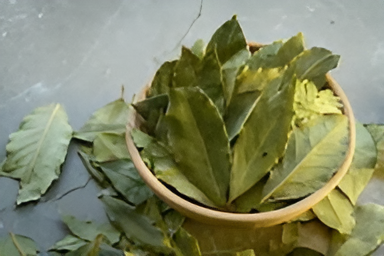
The Versatile Bay Leaf: Culinary and Medicinal Uses
Bay leaves, scientifically known as Laurus nobilis, are a staple herb in many kitchens around the world. Their distinct aroma and flavor make them a popular choice for enhancing a variety of dishes. However, bay leaves also possess medicinal properties and cultural significance that add to their value. This article will explore the culinary uses, health benefits, and interesting facts about bay leaves.
Culinary Uses of Bay Leaves
Bay leaves are primarily used for their flavor. They are commonly added to soups, stews, sauces, and marinades. The leaves are typically used whole and removed before serving, as they are tough and not palatable when eaten. Their unique flavor profile, which is a blend of floral, herbal, and slightly bitter notes, adds depth to many recipes.
- Soups and Stews: Bay leaves are ideal for long-cooking dishes. They release their essential oils gradually, infusing the dish with flavor over time. Whether it’s a classic beef stew or a rich vegetable soup, a couple of bay leaves can elevate the dish.
- Sauces: From tomato-based sauces to creamy gravies, bay leaves are often included to enhance flavor. They pair well with garlic, onion, and herbs, making them a versatile addition.
- Rice and Grain Dishes: Adding a bay leaf to cooking water for rice or grains can impart a subtle fragrance that complements the dish. It’s particularly common in pilafs and risottos.
- Pickling: Bay leaves are frequently used in pickling recipes. Their natural preservatives help enhance the flavor of pickled vegetables and prevent spoilage.
- Meat and Fish: Bay leaves can be used in marinades for meats and fish, infusing them with flavor. They work particularly well in brines and when slow-cooking meats.

Medicinal Properties of Bay Leaves
Beyond culinary uses, bay leaves have been recognized for their medicinal properties for centuries. They contain various compounds, such as eugenol, which has anti-inflammatory and antioxidant properties. The following are some health advantages of bay leaves:
- Digestive Health: It is well known that bay leaves can help with digestion. They can help alleviate symptoms such as bloating and gas, making them a great addition to heavy meals.
- Anti-inflammatory Effects: The eugenol in bay leaves has been studied for its anti-inflammatory properties. In diseases like arthritis, it might aid in lowering inflammation.
- Rich in Antioxidants:The body fights oxidative stress thanks to the abundance of antioxidants found in bay leaves. Wellness and general health may benefit from this.
- Respiratory Health: The essential oils in bay leaves can help clear respiratory issues. Inhaling steam infused with bay leaves may help alleviate symptoms of colds and allergies.
- Blood Sugar Regulation: Some studies suggest that bay leaves may help lower blood sugar levels and improve insulin sensitivity, making them beneficial for those with diabetes.
Cultural Significance of Bay Leaves
Bay leaves have a rich history and are often associated with various cultural traditions. In ancient Greece, bay leaves were used to create laurel wreaths, which were awarded to victors in athletic competitions and as symbols of honor. The term “baccalaureate” derives from the Latin word for “laurel.”
In some cultures, bay leaves are used in rituals for protection and purification. They are thought to attract good fortune and repel bad energy.. In cooking, they are sometimes added to festive meals to symbolize abundance and prosperity.
How to Use Bay Leaves
Using bay leaves is straightforward, but there are a few tips to maximize their flavor:
- Fresh vs. Dried: Dried bay leaves are more commonly used and have a stronger flavor than fresh ones. When using fresh bay leaves, you may need to use more than the recipe calls for.
- Whole Leaves: Always use whole bay leaves in cooking. This allows for easy removal before serving and prevents the unpleasant texture of a chewed leaf.
- Storage: Keep dried bay leaves in an airtight container in a cool, dark place to maintain their flavor. They can last for up to a year, but their potency may diminish over time.
Recipe Ideas Featuring Bay Leaves
- Classic Beef Stew: Add 2-3 bay leaves to your pot along with carrots, potatoes, and beef for a rich, hearty stew.
- Tomato Sauce: Simmer a can of crushed tomatoes with onion, garlic, olive oil, and 1-2 bay leaves for a flavorful sauce.
- Herbed Rice: Cook rice with water, a bit of salt, and a bay leaf for added flavor. Remove the leaf before serving.
- Pickled Vegetables: Include bay leaves in your pickling brine for a unique twist on traditional recipes.
- Herbal Tea: Steep fresh bay leaves in hot water for a fragrant herbal tea that may aid digestion.
Conclusion
Bay leaves are more than just a cooking ingredient; they offer a wealth of culinary and health benefits. Whether you’re enhancing a dish with their aromatic flavor or utilizing their medicinal properties, bay leaves are a versatile herb that deserves a spot in your kitchen. Embrace the rich history and benefits of bay leaves, and experiment with incorporating them into your recipes for an added touch of flavor and wellness.